Razer reported last week that it hit $ 1.2 billion in 2020 revenues, up 48% from a year earlier. It also turned a slim profit ahead of plan, and it announced its how it wants to become a carbon-neutral sustainable company in the next decade.
Those are some big milestones for Min-Liang Tan, cofounder, chairman, and CEO of the gaming peripherals maker that has transformed itself into a “global lifestyle brand for gamers.” I spoke with Tan about the past year, which started with the company announcing that it would use its contractors to make a million masks to help with pandemic relief. That was an odd move for a company whose motto is “by gamers, for gamers.”
Nothing about the past year turned out as expected. The mask manufacturing actually drove Razer to develop a smarter mask for gamers. And while the transition was difficult, Razer saw a boost in demand, much like other game companies saw as people turned to games for distractions while sheltering in place. The company closed the year with 123 million user accounts, up 54% from a year earlier. Tan expects further growth in 2021, as he believes that more people are picking up the gaming habit.
We talked about whether Razer is a tech company, a game company, or a fashion company. And given its focus on mice, keyboards, and headsets, I also asked if it was a boring company or an exciting one. I also asked Tan if the pandemic made him think about what kind of boss he wanted to be. We also talked about whether Razer will move further into fintech and cryptocurrency, given the craze around non-fungible tokens (NFTs) and related categories. Tan, who favors black T-shirts for his idea of gamer chic, had some interesting answers.
Here’s an edited transcript of our interview.

Above: Min-Liang Tan favors black T-shirts.
GamesBeat: Your earnings turned out very well for the last year. You hit the profitability mark. That’s very significant. What’s your takeaway about that?
Min-Liang Tan: The first thing was, hitting the $ 1 billion milestone in terms revenue was big. In terms of scaling the company, as I was telling a board member of ours — a lot of companies get billion-dollar valuations, but the billion-dollar revenue mark is a new milestone, scaling toward that. That’s been a big thing for the company.
Over and above, scaling up in terms of the bottom line — often we hear about tech companies needing to burn a lot of cash to scale the outsized growth. Non-tech companies, while they don’t have the outsized growth, they have the profitability. At Razer we’re proud of being able to deliver a bit of both. It’s about outsized growth and continued profitability moving forward. We continue to see that in the business.
The pandemic has brought a host of new gamers into the demographic. It’s accelerated all of that. Over the past 10 years, probably every year someone says, “Is the growth maxed out? How much bigger can gaming get?” We’re always seeing new gamers come through. Digital entertainment is on the rise. Even today, I’m more optimistic than before about the number of gamers and the growth of the whole demographic. We’re happy with how 2020 turned out for us. It was an extraordinary year at Razer. Looking ahead, we see sustained activity. We’re quite optimistic about that.
Rapid growth
GamesBeat: Your forecast is for more growth. I wondered, as we went into this period of difficult comparisons, like the second or third quarters of the calendar year, will it be hard to beat last year, because last year was so exceptional, so different?
Tan: From our perspective, the difference at Razer is that we’re not just a hardware company. We do hardware. We sell a billion dollars worth of hardware right now. But we’re an entire ecosystem. We have a software side and a services side, which makes us unique compared to most of the other hardware plays out there. On the software side, we have about 123 million users on our software platform today. That allows us to do a couple of things. It provides us an insight on the gamer. What kind of games you play, how long you play them. It also allows us to design better products. That’s where we use a lot of the data, to design better products for ourselves.
We had the same thoughts. When the pandemic started, the lockdowns started coming through, we saw gaming activity on our software platform go through the roof. Our 123 million users are spread out globally. We could see when lockdowns happened on the very day. Gaming activity would spike that day and remain sustained. The question we had was, while we’re now gunning toward delivering software, services, and hardware, would growth taper off post the pandemic?
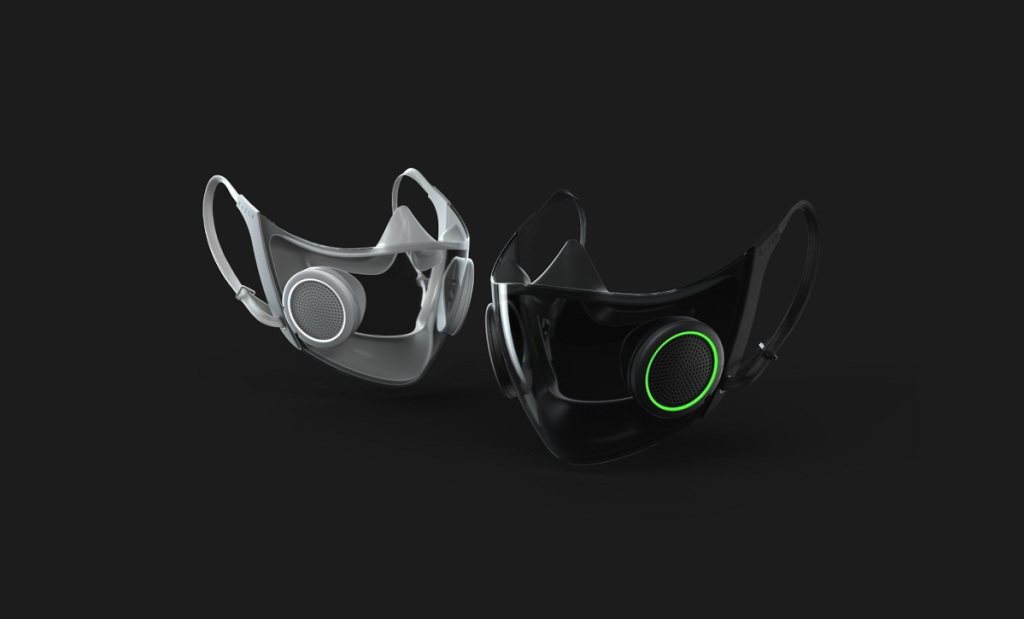
Above: Razer’s Project Hazel smart masks.
We started looking at markets that had opened up prior to the rest of the world. China is a good example. There’s a sense of normalcy there at this point. We saw gaming activity come down a bit, but the state it’s at is still a lot more elevated than where it was at the start of the pandemic. What we’ve realized is that the COVID pandemic has brought together a whole bunch of new gamers, for one, and it’s changed a lot of behavior. Digital entertainment is now the linchpin, the center of entertainment for a lot of people. Even when things open up, it’s going to remain one of the top forms of entertainment. That’s why we’re still bullish moving forward.
Don’t get me wrong. I’m sure that people will be going out and shopping and traveling. I hope that happens, because I look forward to it myself. But I do think that gaming has changed around the world. It’s much more accepted. It’s a more social activity for so many people.
GamesBeat: Are you a tech company, a game company, or a fashion company?
Tan: You know, I ask myself that sometimes. Clearly, from a tech perspective, that’s where a lot of our fundamentals are. Design, technology, the amount of R&D we do. You constantly see us at CES pushing out innovation. Thermal engineering, stuff like that for our Blades. We’re clearly a tech company.
From a lifestyle, fashion kind of perspective, it calls back to the brand. We have a brand that isn’t necessarily just focused on a particular category. Most tech companies, if they try to move out of their category, everyone pushes them back. Focus on what you’re good at. For us, as a peripheral company, to be able to extend to other forms of hardware, the Blade for example — going from peripherals to laptops should have been insanely difficult, but for us we straddled that very quickly. People assume that was the way it should be.
Today, when we started our fintech business — because we shared the numbers with the IPO, it was only about $ 5-$ 10 million in 2017. Many people said, “You’re doing payment services? You’re a hardware company.” Now it’s grown 12 times. It’s a $ 120 million business. As a fintech company, we’re one of the fastest growing fintechs on the planet. We process $ 4.5 billion in digital payments. The brand has helped us extend that.
Now we have people saying, “We want the Project Hazel masks. That’s something I want to wear.” We’re doing crossover collabs with Bathing Ape and all that. From the brand perspective we’ve built a very unique lifestyle brand. There aren’t many lifestyle brands in tech. In fact I’d venture to say there are only one or two that have really extended that. We’re definitely a tech company. We’re 100 percent focused on the gamer. That’s maybe a bit of a difference. We’re not a gaming company per se, but we’re a gamer company. We focus on this demographic because that’s our motto. For gamers, by gamers.
Are keyboards boring?
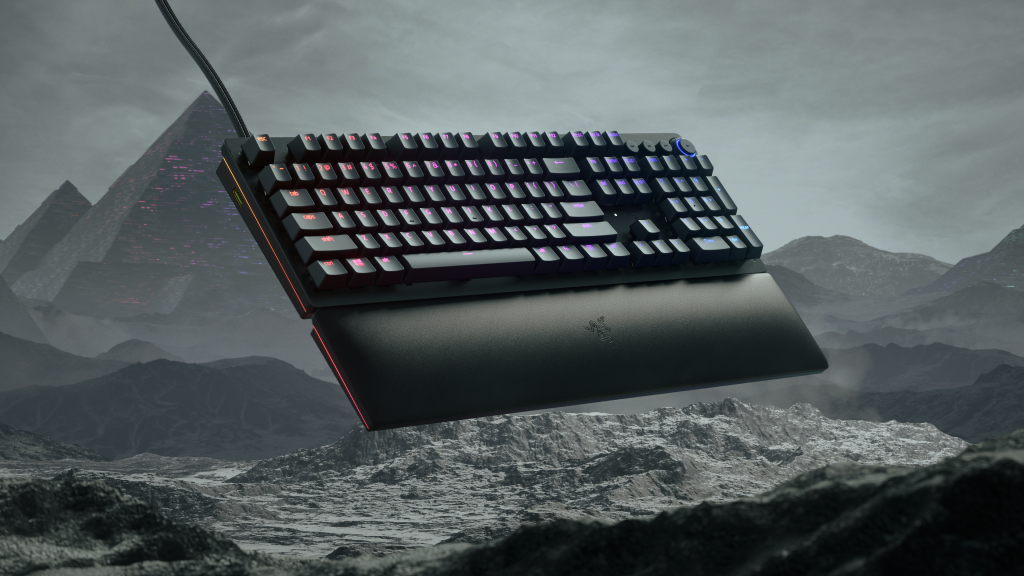
Above: The Razer Huntsman V2 Analog is an expensive keyboard, but also a feature-packed one.
GamesBeat: Are you a boring company, or an exciting company? You got to a billion dollars on mice, keyboards, and headsets. They’re not the most exciting products sometimes. You have the image, but then you have the reality of where the revenue comes from.
Tan: We’re the ones who created this entire gaming peripherals industry. We’re the pioneers. We made it sexy, to a certain extent. But over and above, it’s been much more than that. It’s been the focus on this demographic. In the early days, Apple made the creative professional the center and ignored everyone else. Everyone looked at the creative professional back in the day as this quirky kind of guy. Why is this fruit brand so focused on that demographic? But that demographic has grown and made Apple one of the biggest tech lifestyle companies in the world.
We were always focused on the gamer. Likewise, just as after 30 years Apple did it with the creative professional — people used to look at gamers as a little quirky. Why would you spend all your time with a PC? But that’s why we’re 100 percent focused. We built hardware and software around the gamer. Many of those innovations go into the products that we come up with. Project Christine, the modular PC, we launched that with the Tomahawk desktop. Most of our concept products, we take key elements of the technology and put it into products that we ship.
That’s the stuff like thermals, back in the day. When we first launched the Razer Blade, everyone said that no one wanted a thin, powerful laptop. They wanted thick, heavy, full-power stuff. But we pioneered every aspect of it. We pioneered high-performance gaming peripherals. We pioneered gaming laptops. We’ve moved into smart masks and chroma lighting. We’re responsible for the whole RGB thing globally. Some people have taken it to levels I wouldn’t have thought of, but we looked at using light for design, and that’s still a big part of what we do.
For our demographic, we excite the gamer. For people outside that demographic, they may not necessarily appreciate it as much.
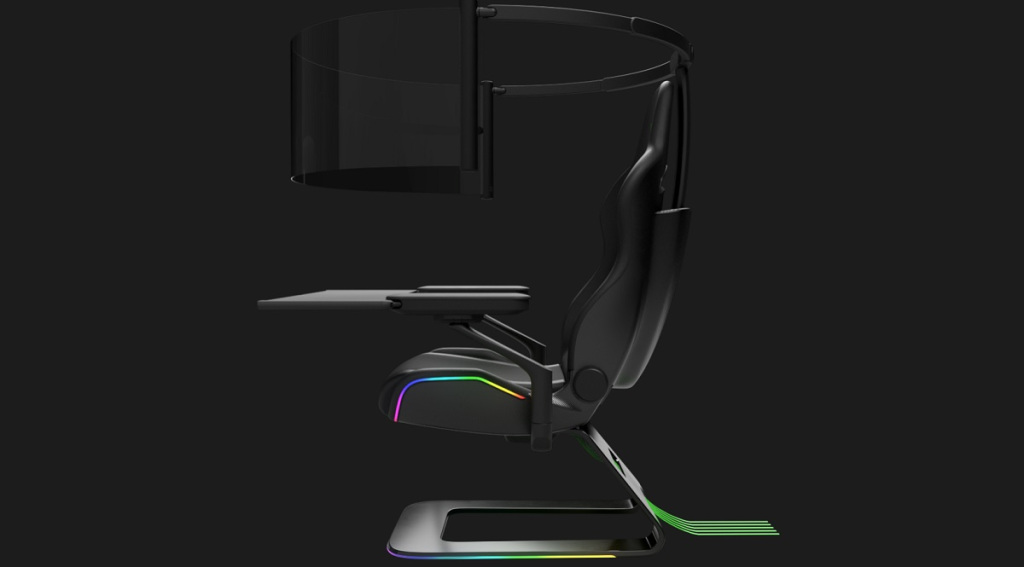
Above: Razer’s Project Brooklyn gaming chair is among the company’s lifestyle products.
GamesBeat: What it did feel like, if you can remember back to the beginning of the pandemic — you were making masks. You weren’t as focused on the core business. To come out of that year with all this revenue growth, it must be very satisfying, but is it also unexpected?
Tan: It’s gratifying for us, because when the pandemic hit, everybody was in a state of confusion. I’ll be candid. We were all wondering what was going to happen. Is it the end of the world? We got together and we went back to basic principles or fundamentals. We’ve been a different kind of company. We’ve always focused on our fundamentals and what we want to do over a very long term. We want to focus on the gamer demographic. We didn’t want to do stuff for short-term gains.
To that end, we said, “Look. We have a war chest. We have no debt.” The first thing we committed to globally, and the rest of the team can tell you that, we made a statement that we weren’t going to do any layoffs. “We have enough money to last for years. Everybody stay calm. We’re going to be okay.” That was the first thing we did.
The second thing, we looked at our core business. This was March. No goods could come out of China. Everything was stuck. We needed to do something. We reassured the staff that they didn’t have to worry, and it didn’t matter if our stores were closed. Every employee would be taken care of. But the next thing was, how do we make sure we give something back, now that we have the resources to do that? I dropped a note to the team telling the story about the grasshopper and the ants. “We’ve prepared for this day. What do we do now to give back?”
We turned our manufacturing facilities in China immediately over to manufacturing masks. We had a partner that was able to do that. We were able to ship them globally, and we committed more than million masks to any frontliners out there. We just started shipping them. That was what kept the organization busy in a very short amount of time. Instead of worrying about business, we were worried about what we could do for the world. We were shipping masks everywhere. Ryan Reynolds reached out and we shipped masks to Canada. There was a bunch of activity going on. That got the team over the hump of being worried about the early days of COVID. It was a crazy time for all of us.
Now that we knew how to make masks, though — we’re certified to make medical masks, and we built manufacturing lines in Singapore in 24 days — we realized we could make a better mask. If you told me a year ago that we’d be making masks, I’d have said, “What?” But now we’re making certified medical-grade masks, and we’re looking to design an even better mask. After a few months we realized that some of the masks out there aren’t sustainable. Sustainability is a big part of what we do. We knew we had to do something about it, and that’s what we’re doing at this point in time.
Tough boss image
GamesBeat: I wonder about some personal reflections. What kind of boss do you want to be? I remember the Kotaku story, a pretty tough story. It found that “Min is a tough boss.” But you have almost a Steve Jobs-like desire for perfection, which is a good quality, I think. And then you have the pandemic that came along and put a lot of stress on the organization. Has the past year made you think about what kind of boss you want to be?
Tan: We’re incredibly tough, as a team, when it comes to designing products, doing the very best products there is. We push ourselves to make sure that things are done well. Even during the pandemic, one of the things that we thought and spoke about constantly, being tough on ourselves allows us to be prepared for things like this. In these times we’re able to tell the team, “We’re taking care of everyone.” That’s because of all the things we’ve done before. This was a constant refrain.
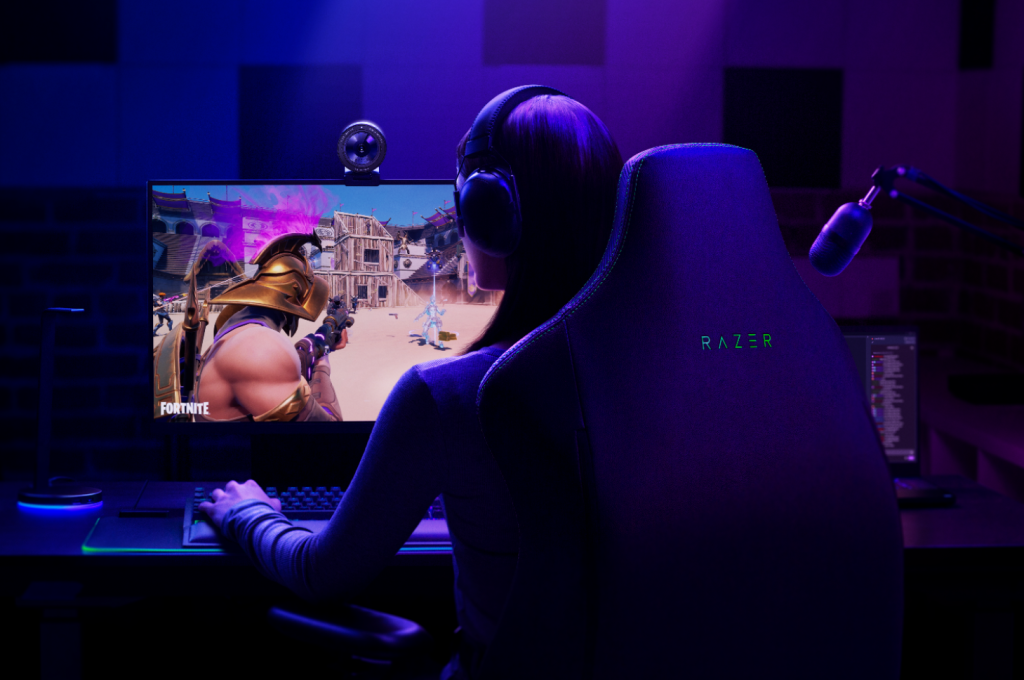
Above: The Razer Kiyo Pro webcam.
We constantly push ourselves. Even setting up things in a very short amount of time, that’s tough. I’ll be candid. We were trying to set up a line in 30 days, and people were working incredibly hard. People were staying on the premises, getting it tested. It’s made us very reflective. We’re thinking a lot further. But I don’t think it’s taken anything away from us trying to make great products. We continue to do that.
What’s gotten us more reflective as well, we’re a billion-dollar company from a valuation perspective, and now in terms of revenue. The next big thing we’re focused on is how we can affect or improve the lives of at least a billion people out there. That’s also one of the big things, internally, that I’m very passionate about. I’ve been pushing that quite a bit, the whole sustainability aspect. We’ve been tough on ourselves to say, “There’s a lot of talk about this, but we want to put pen to paper, make proper targets, and drive ourselves to those targets, however hard it is.” It’s made us reflective, definitely, but in many cases we also remain very focused on getting things done, designing great products, and making them perfect.
GamesBeat: The sustainability targets seem very ambitious, very hard to reach.
Tan: We wanted to do some of the targets from a short-term perspective as well as mid-term and long-term. Some of them are very hard, like being carbon neutral by 2030. The big one for us is to ensure on a product level that everything we ship is either with recycled material or will be recyclable. That’s hard for us to achieve in the next 10 years or so. But this is the kind of thing we’ve already started doing.
Our product packaging already went sustainable before any of this happened. The real reason is that a lot of our users, our community, they’re passionate about sustainability too. We’re one of the biggest youth and millennial brands in the world at this point. Gamers know who we are. That’s stuff we focus on.
NFTs?
GamesBeat: You mentioned some of the fintech projects. This category of nonfungible tokens [NFTs] has exploded and made blockchain popular again. It’s an area where you are knowledgeable. Do you think there’s an opportunity there for Razer in some way?
Tan: I’ll be careful about this, because I constantly get crypto and NFT enthusiasts pinging me on Twitter. I don’t want to say the wrong thing and get everyone excited. But what I will say, from a tech person’s perspective, I’m passionate and interested in blockchain. I spend a lot of time looking at blockchain and crypto and things like that.
Razer Gold is a precursor to that. It’s a closed loop, so it’s not on the chain. It’s bigger in the emerging markets like Latin America and southeast Asia. But to give you the flavor of Razer Gold, you can buy or pick up Razer Gold at about 5 million points worldwide. It’s the de facto digital credit — I’m being very careful, because we’re regulated everywhere for this. But we’re the de facto digital credit for many of the games out there. We’re integrated with Tencent Games, with EA and Activision. All of this is off the chain, on a private chain at this point in time. But we process payments for PUBG Mobile, for Genshin Impact, things like that. If we ever put it on the chain, it would become one of the biggest cryptocurrencies in the world.

Above: Razer is going green.
I see the allure of the technology behind the blockchain and crypto, but we also want to be able to balance it with the real-world requirements in terms of economics. Economics is something people don’t spend a lot of time with. I spent a lot of time looking at NFTs and things like that. I realize that a lot of the blockchains, on a technical level, it’s all about getting it tested. Whether the transactions per second will work. I can geek out about this for a long time. But it’s one of the things I look at.
The sustainability aspect is something I’m concerned about. The proof of work, the use of electricity, stuff like that. I’d say that we at Razer are interested in what’s going on. We have a platform and a brand that would resonate very well with youth and millennials. We’re already one of the biggest fintechs in the region, and one of the fastest growing. We tend to be one of the few companies that are prepared to take interesting steps from a technology perspective. But we’re still evaluating what might be the best technology to work with, the best blockchain partner to work with. We’re taking our time looking at that.
Stop Asian Hate
GamesBeat: On another sober subject, have you had a chance to reflect on the “Stop Asian Hate” movement?
Tan: Given that I used to stay in San Francisco quite a bit — I watched the video of the woman who beat up that guy. I’ve read a lot of stories. I’ll be honest. On a personal basis, I’ve started writing something about it, and I keep deleting it. I write something, I think about it, and I delete it. It’s one of those things where I want to be able to provide a very measured, thought-out perspective, especially since we do have a big audience. I hear other people in the same situation. There’s so much happening and it’s difficult to put everything in a single post.
I’ve been talking to some of the other guys in the Asian-American community, a group of guys in the tech community that’s come together. I don’t know if you’ve seen our Facebook page, but we’ve been chatting out our perspectives. I’m very concerned about it. We want to be able to do something. At some point I want to be able to at least, from a very personal perspective, put my thoughts down in an accurate fashion. That’s where I am right now. What do you think?
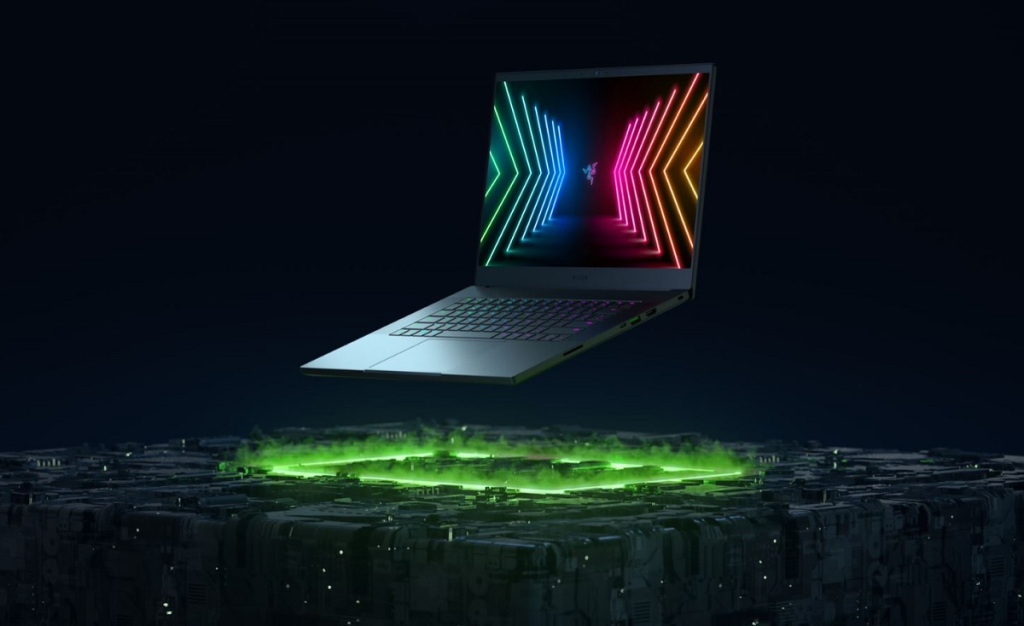
Above: Razer Blade 15 is another of the company’s products for gamers.
GamesBeat: I wrote about that in a column last Friday. I felt like I found my voice on that subject, about better representation for Asian Americans in games.
Tan: I’ll have to [read] it.
GamesBeat: Any closing thoughts on where you’re at right now?
Tan: We’re very focused. We’ve always been focused on the gamer, even when the demographic wasn’t very popular, and now that a lot of people are focused on the gamer, we still are. That’s one of the reasons why we’re one of the biggest youth lifestyle brands in the world. We want to continue doing what we’re doing, continue focusing on it.
In terms of investments, we listed on the Hong Kong exchange. We’re getting a lot more attention in the U.S. right now, because a lot of our peers are listed in the U.S. One of the big questions that was asked of me is if we’d look at a dual listing. It’s something we’re exploring. There’s a huge demand from institutional investors in the U.S. We’re keeping our options open for shareholder value. But we’ll keep doing what we’re good at. For gamers, by gamers. I always close off with that.
GamesBeat
GamesBeat’s creed when covering the game industry is “where passion meets business.” What does this mean? We want to tell you how the news matters to you — not just as a decision-maker at a game studio, but also as a fan of games. Whether you read our articles, listen to our podcasts, or watch our videos, GamesBeat will help you learn about the industry and enjoy engaging with it. How will you do that? Membership includes access to:
- Newsletters, such as DeanBeat
- The wonderful, educational, and fun speakers at our events
- Networking opportunities
- Special members-only interviews, chats, and “open office” events with GamesBeat staff
- Chatting with community members, GamesBeat staff, and other guests in our Discord
- And maybe even a fun prize or two
- Introductions to like-minded parties




